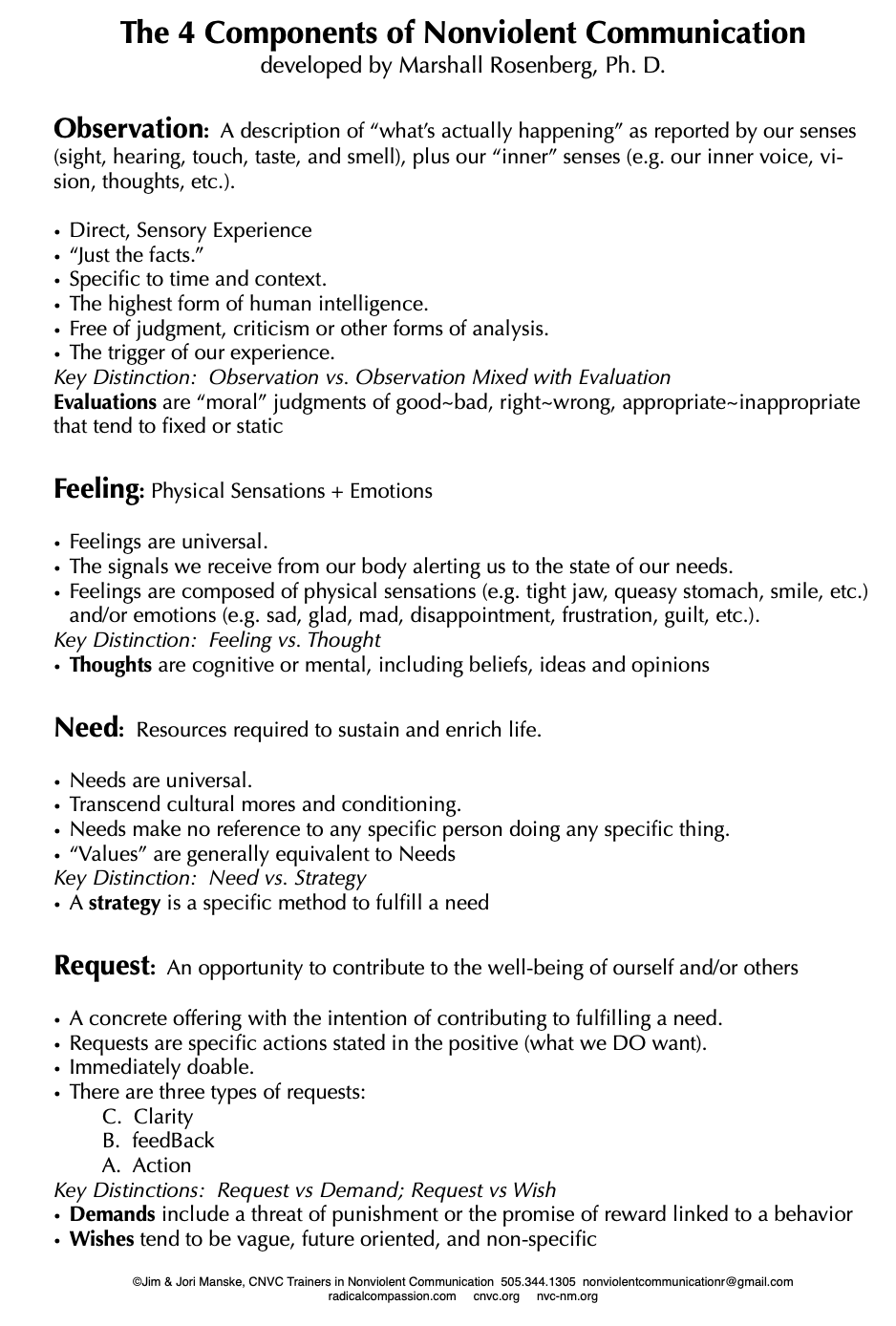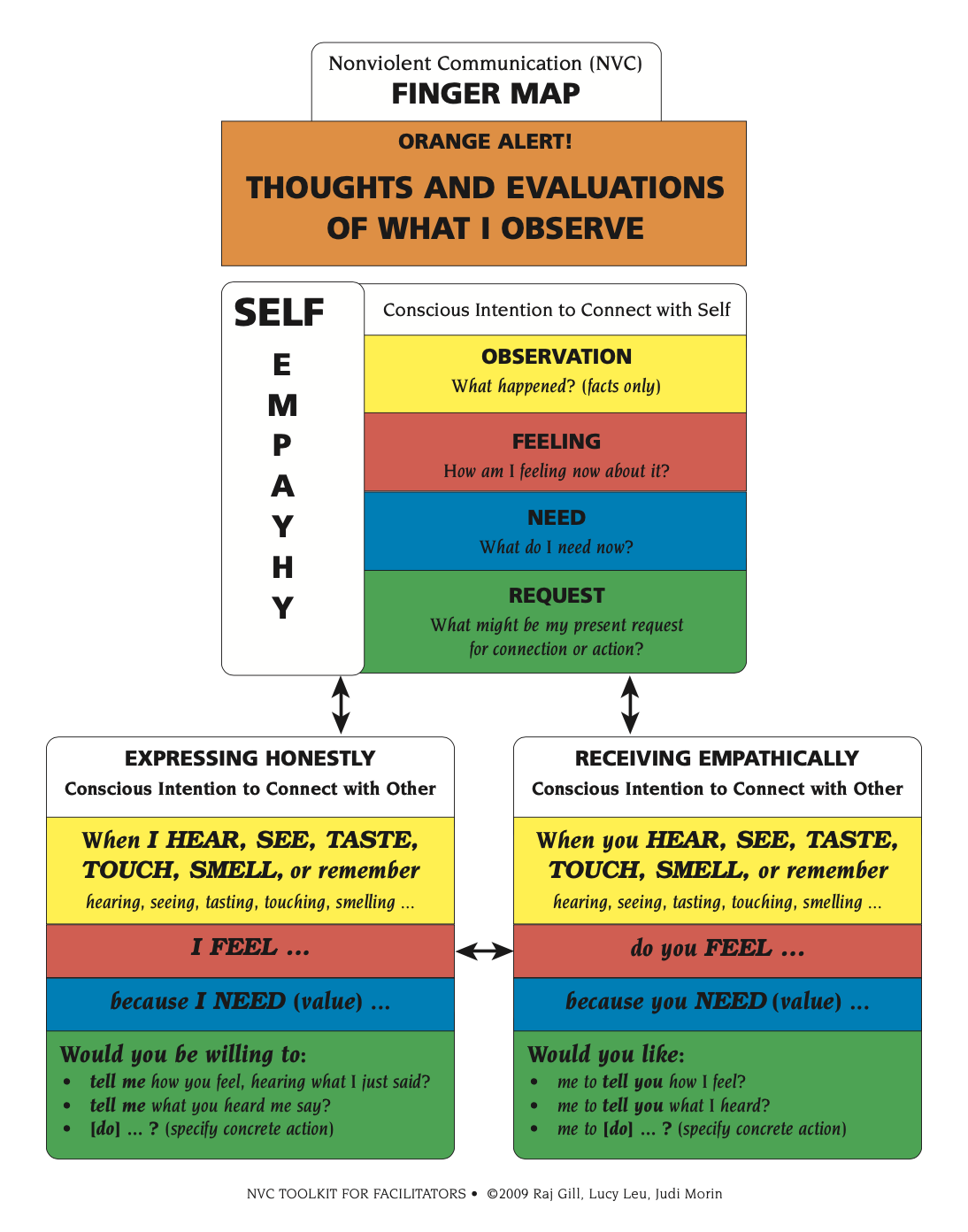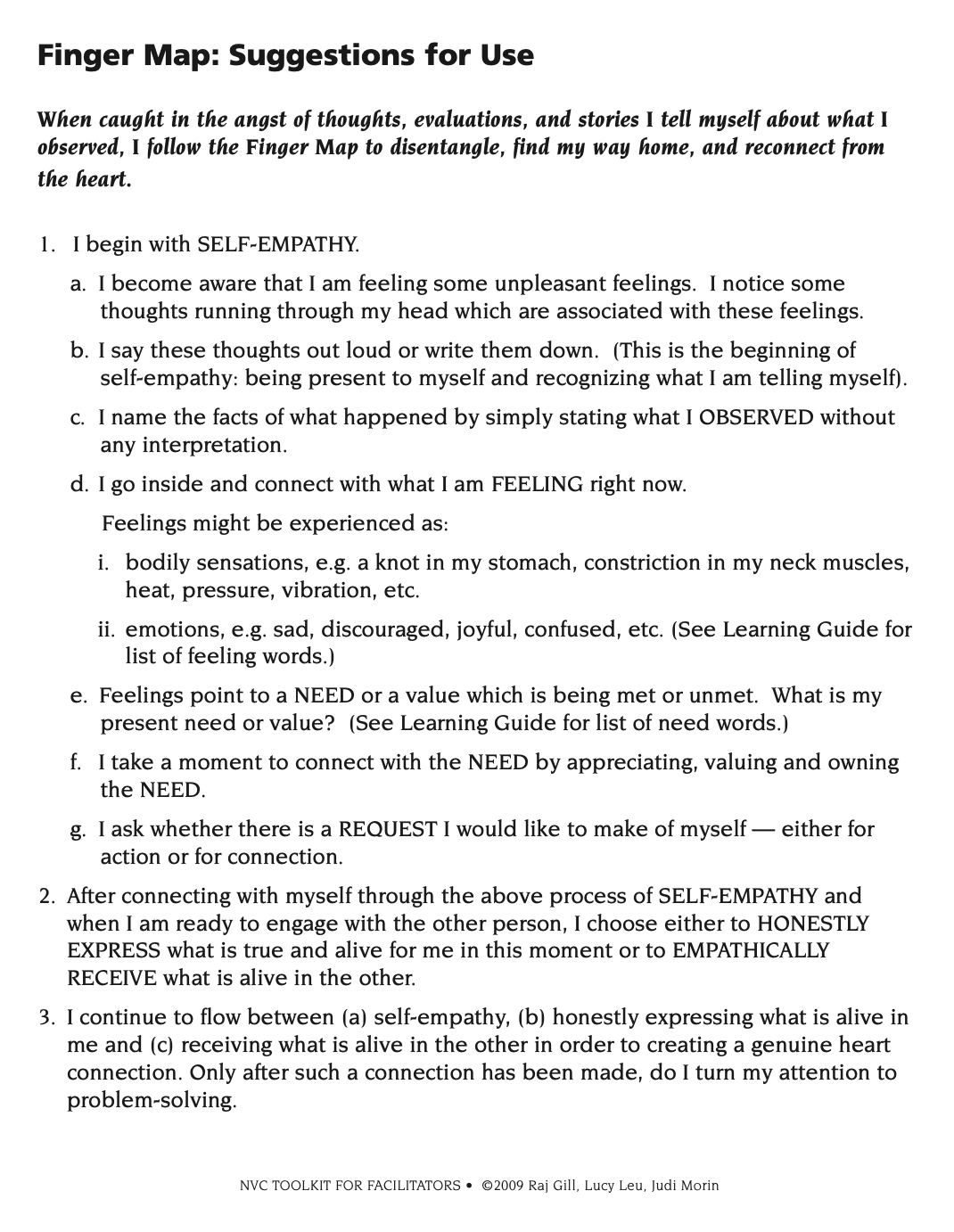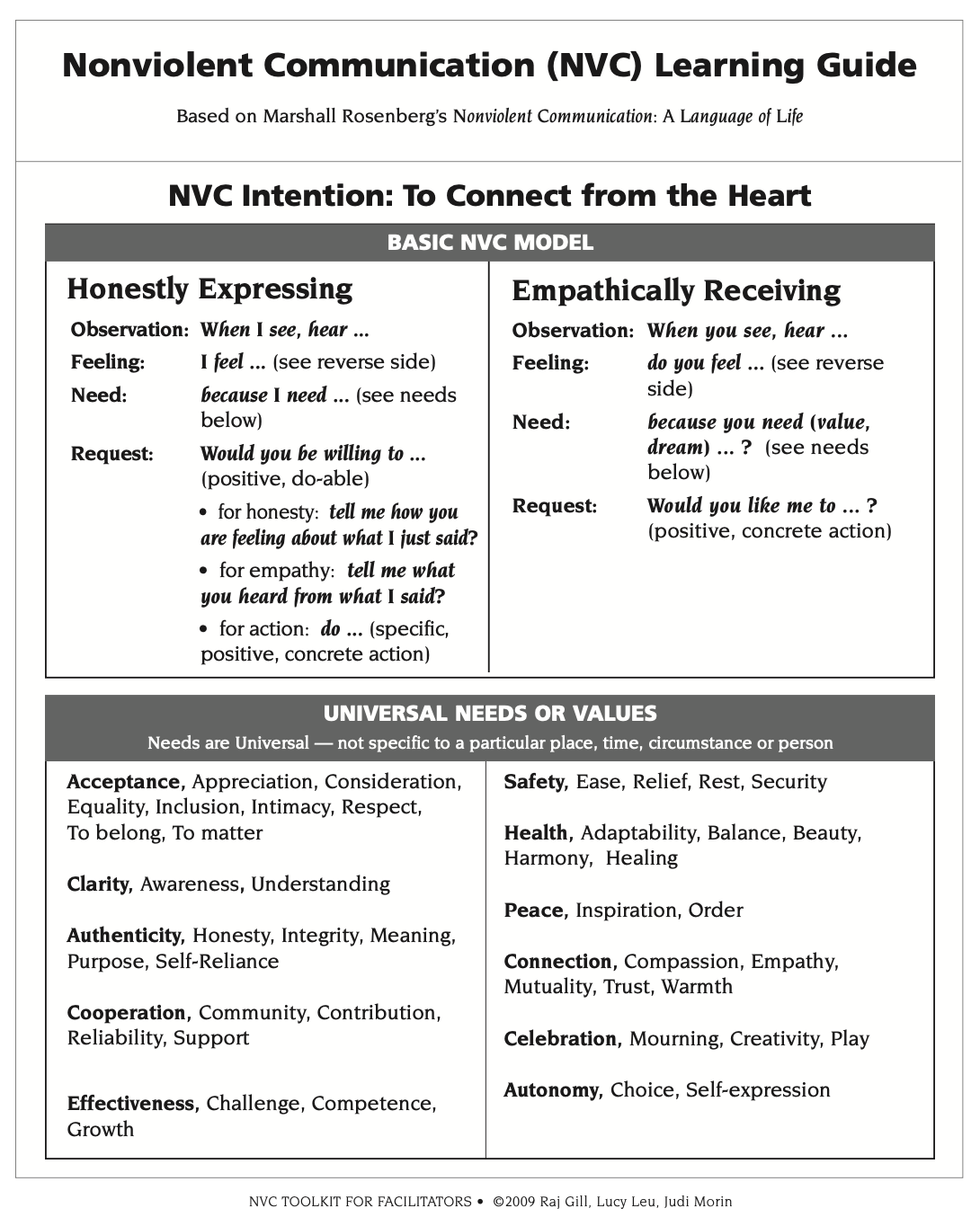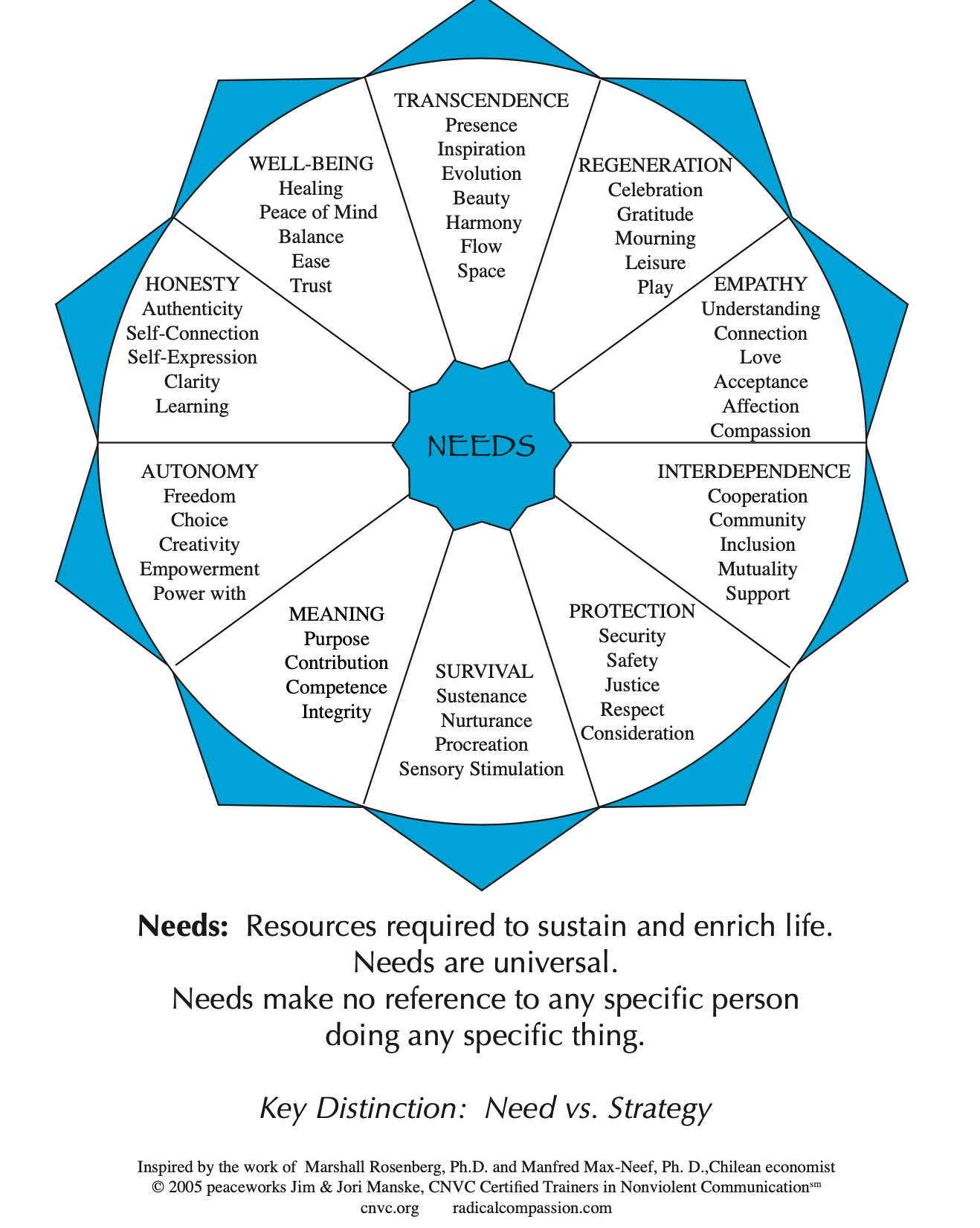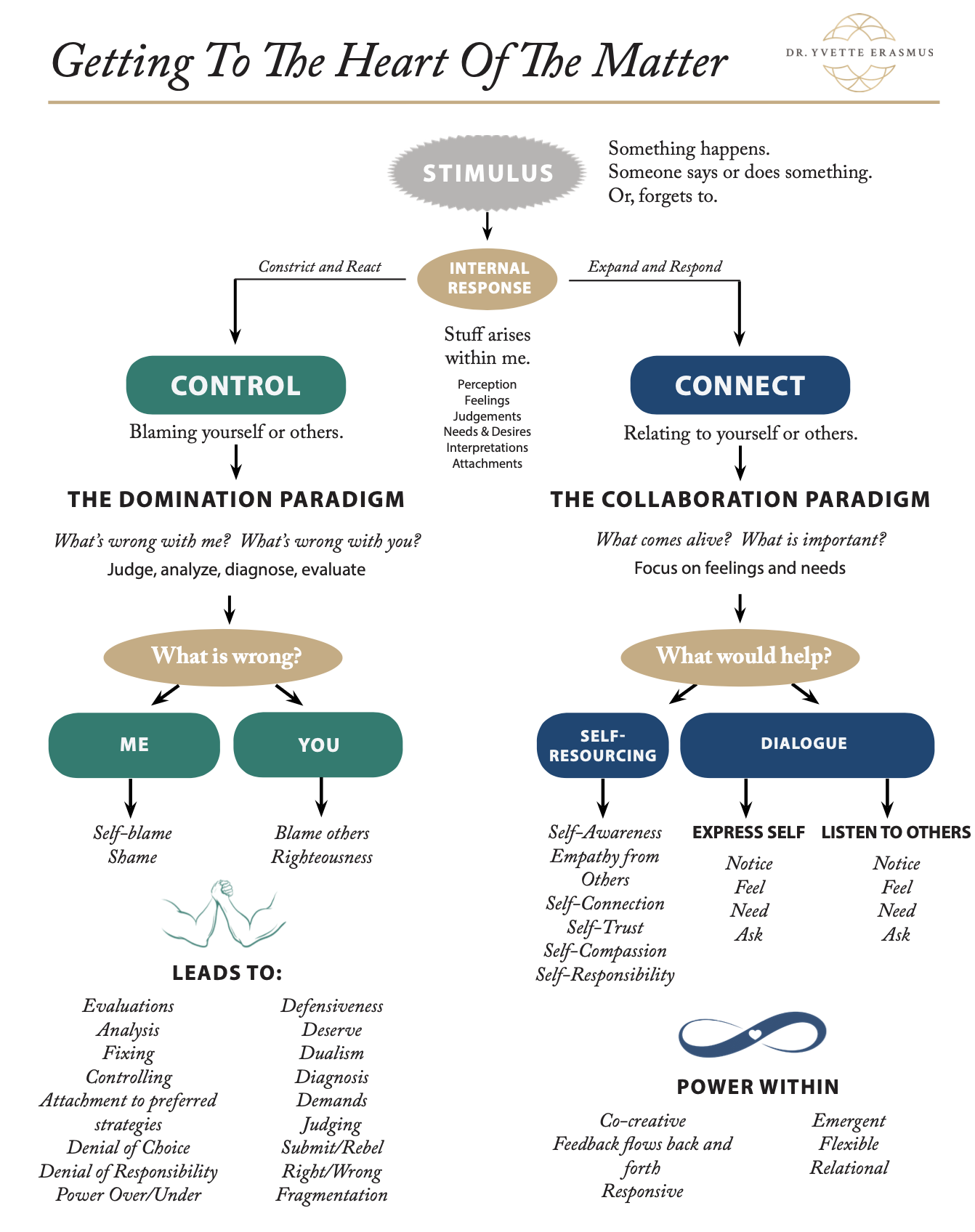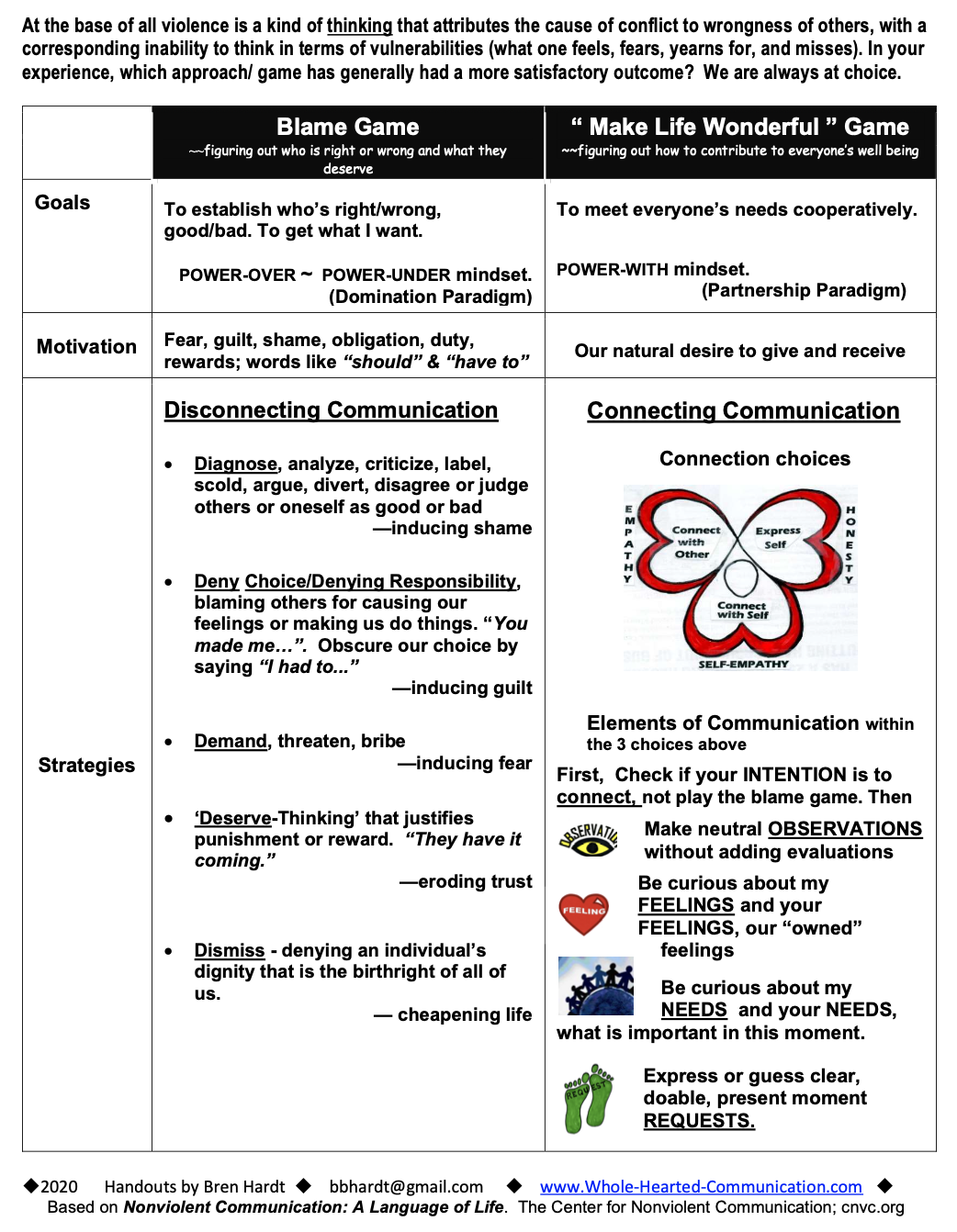Compassionate Communication (NVC)
Counseling in South Tampa, Hyde Park and Online Therapy available in Florida, Virginia.
The Heart of Nonviolent Communication (NVC)
A Brief Introduction to the Concepts of NVC
Compassionate Communication (Nonviolent Communication)
At our core, human beings are wired for compassion. When we feel connected to ourselves and others, giving and receiving from the heart comes naturally. But sometimes life experiences, stress, and old patterns of communication can disconnect us from that natural state.
Many of us have learned to speak in ways that judge, label, or criticize. Even when we don’t mean harm, these habits can cause distance and pain in our relationships. Nonviolent Communication (NVC) offers a way back to compassion, connection, and understanding.
What is NVC?
NVC is a simple but powerful framework developed by Dr. Marshall Rosenberg. It teaches us how to:
Express ourselves with honesty and clarity.
Listen with empathy and openness.
Identify the deeper needs beneath our feelings and behaviors.
Make clear requests that build connection rather than conflict.
At its heart, NVC is about slowing down, getting curious, and learning to connect to what really matters… for ourselves and for others.
The Four Steps of NVC
The NVC process focuses on four key areas:
Observation – What happened, without judgment or interpretation.
Feelings – How we feel in response to what we observed.
Needs – The universal human needs connected to those feelings.
Request – A clear, specific action that could make life better.
Example: Instead of saying “You’re so messy!”, NVC helps us reframe:
“When I see socks left on the floor, I feel frustrated because I need more order in our shared space. Would you be willing to put your socks in the hamper?”
This small shift can transform conflict into connection.
Why Practice NVC?
Stronger Relationships – Build trust, respect, and deeper intimacy.
Better Conflict Resolution – Replace blame and defensiveness with curiosity and care.
Greater Self-Compassion – Treat yourself with the same kindness you offer others.
Practical Tools for Life – Use it at home, at work, with family, and even in moments of tension.
NVC does not require the other person to know or practice the model. By staying rooted in compassion and communicating from the heart, you can shift the dynamic and create new possibilities for connection.
Bringing NVC Into Your Life
At South Tampa Therapy, we use NVC alongside other evidence-based approaches to help you:
Break free from cycles of conflict.
Communicate your needs without guilt or blame.
Understand the needs and emotions of those you love.
Create a culture of empathy in your relationships and family.
It takes practice, but compassion always has the potential to grow when we create space for it.
✨ If you’d like to learn more or begin practicing NVC in your life or relationships, we’d love to support you. BOOK HERE
Discover how Nonviolent Communication (NVC) can improve relationships, reduce conflict, and build deeper emotional connection. South Tampa Therapy offers compassionate counseling in Tampa, Hyde Park, and across Florida.
🪑 The 5 Chairs Explained Through Different Modalities
NVC TedTalk (Above) 🔗 https://youtu.be/4BZuWrdC-9Q?si=VKuK-zhMlQ9UJpQS
🔴 Red Chair – Jackal (Attack / Judgment)
Core theme: Blame, criticism, lashing out.
• NVC: Judgmental “jackal talk”—blame and labels instead of naming feelings/needs.
• Gottman: Criticism and contempt—the two most toxic predictors of divorce.
• EFT / Attachment: The “fight” response—pushing partner away out of fear or pain.
• IFS: Angry protector part—protecting vulnerable exiles with attack.
• Psychodynamic: Projection/displacement—unconscious anger pushed outward.
🟡 Yellow Chair – Hedgehog (Self-Doubt / Fear)
Core theme: Retreat, insecurity, inner criticism.
• NVC: Turning judgment inward—self-blame instead of self-empathy.
• Gottman: Can look like stonewalling or withdrawing due to shame and overwhelm.
• EFT / Attachment: The “flight/freeze” response—fear of abandonment, feeling unworthy.
• IFS: Self-critical protector or exile—carrying shame or “not good enough” beliefs.
• Psychodynamic: Superego harshness—internalized critical voices from early life.
🟢 Green Chair – Meerkat (Wait / Pause)
Core theme: Curiosity, observation, mindful presence.
• NVC: Pausing to check: “What am I feeling? What am I needing?” before reacting.
• Gottman: A “softened start-up”—choosing a gentler opening instead of escalation.
• EFT / Attachment: Creating space for co-regulation—pausing to stay in secure connection.
• IFS: The Self’s curious, calm presence—watching parts without blending.
• Psychodynamic: Observing ego—awareness that reflects rather than reacts.
🔵 Blue Chair – Dolphin (Detect / Assertive Self)
Core theme: Self-awareness, boundaries, honest expression.
• NVC: Honest “giraffe talk”—clear feelings/needs and making specific requests.
• Gottman: Healthy communication—assertiveness without blame, “I” statements.
• EFT / Attachment: Speaking vulnerably: “I need…”—claiming secure attachment needs.
• IFS: Self-led expression—confidence and clarity without protectors hijacking.
• Psychodynamic: Integrated ego—balanced, mature identity able to set boundaries.
🟣 Purple Chair – Giraffe (Connect / Compassion)
Core theme: Empathy, compassion, big-picture connection.
• NVC: Highest form—empathy for self and others, heart-to-heart communication.
• Gottman: Building fondness/admiration, turning toward bids, repair attempts.
• EFT / Attachment: Secure bond, emotional attunement, repair, and closeness.
• IFS: Self-energy—compassionate leadership that embraces all parts.
• Psychodynamic: Empathic attunement—repairing relational wounds through connection.
✨ In summary:
• Red = attack others.
• Yellow = attack self.
• Green = pause.
• Blue = speak assertively.
• Purple = connect with empathy.
🪑 Reflective Questions: Moving to More Productive Chairs
🔴 Red Chair – Jackal (Attack / Judgment)
When stuck in criticism, blame, or anger…
• What need of mine is not being met right now?
• If I paused (Green), what might I notice in my body or emotions?
• How would it feel to express my frustration as an “I” statement instead of blame (Blue)?
• What might compassion (Purple) for myself and the other person look like here?
🟡 Yellow Chair – Hedgehog (Self-Doubt / Fear)
When stuck in insecurity, shame, or self-attack…
• What voice am I hearing—does it sound like me or someone from my past?
• If I pause (Green), what would I discover I’m really needing?
• What would it sound like to speak my needs with clarity (Blue)?
• If I treated myself as kindly as a dear friend, what would I say (Purple)?
🟢 Green Chair – Meerkat (Pause / Curiosity)
When pausing before reacting…
• What emotions and needs are alive in me right now?
• What assumptions am I making about the other person?
• If I spoke from clarity (Blue), what would I say?
• How could empathy (Purple) change the way this moment unfolds?
🔵 Blue Chair – Dolphin (Assertive / Honest Self)
When speaking with clarity and boundaries…
• How can I express my needs without blaming?
• What does my calm, confident voice sound like?
• How would empathy (Purple) make my message easier to hear?
• What’s one thing I can say that honors both my truth and the relationship?
🟣 Purple Chair – Giraffe (Empathy / Connection)
When practicing compassion and connection…
• What’s it like to see this situation through their eyes?
• How can I hold empathy for both of us, not just one side?
• What repair or reassurance might build trust here?
• How can I stay anchored in this chair even when I feel triggered back into Red or Yellow?
✨ Summary Reflections for Clients:
• Which chair do you find yourself in most often?
• Which chair would you like to strengthen?
• What’s one small shift you could try this week to move into Green, Blue, or Purple when you notice yourself in Red or Yellow?
Click Below to Read:
A LANGUAGE OF LIFE (BOOK PDF) (NVC)
Bringing NVC Into Your Life
Whether you are facing relationship struggles, family stress, or personal growth challenges, NVC can help. At South Tampa Therapy, our therapists integrate NVC, the Gottman Method, EFT, Psychodynamic and IFS to create customized treatment plans that help you reconnect, communicate, and thrive.


